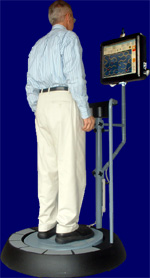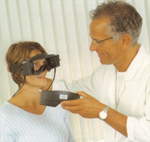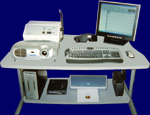Sunday, November 21, 2004
Elder Fall Prevention Act of 2002
107th CONGRESS
2nd Session
H. R. 3695
To direct the Secretary of Health and Human Services to expand and intensify programs with respect to research and related activities concerning elder falls.
IN THE HOUSE OF REPRESENTATIVES:
February 7, 2002
Mr. Pallone introduced the following bill; which was referred to the Committee on Energy and Commerce
A BILL:
To direct the Secretary of Health and Human Services to expand and intensify programs with respect to research and related activities concerning elder falls. Be it enacted by the Senate and House of Representatives of the United States of America in Congress assembled,
SECTION 1. SHORT TITLE.
This Act may be cited as the `Elder Fall Prevention Act of 2002'.
SEC. 2. FINDINGS.
The Congress finds as follows:
(1) Falls are the leading cause of injury deaths among people over 65.
(2) Sixty percent of fall-related deaths occur among persons 75 and older.
(3) Twenty-five percent of elderly persons who sustain a hip fracture die within 1 year.
(4) Hospital admissions for hip fractures among the elderly have increased from 231,000 admissions in 1988 to 332,000 in 1999. The number of hip fractures is expected to exceed 500,000 by 2040.
(5) The costs to the Medicare and Medicaid programs and society as a whole from falls by elderly persons continue to climb much faster than inflation and population growth. Direct costs alone will exceed $32,000,000,000 in 2020.
(6) The Federal Government should devote additional resources to research regarding the prevention and treatment of falls in residential as well as institutional settings.
(7) A National approach to reducing elder falls, which focuses on the daily life of senior citizens in residential, institutional, and community settings is needed. The approach should include a wide range of organizations and individuals including family members, health care providers, social workers, architects, employers and others.
(8) Reducing preventable adverse events, such as elder falls, is an important aspect to the agenda to improve patient safety.
SEC. 3. PURPOSES.
The purposes of this Act are--
(1) To develop effective public education strategies in a national initiative to reduce elder falls in order to educate the elders themselves, family members, employers, caregivers, and others who touch the lives of senior citizens;
(2) To expand needed services and gain information about the most effective approaches to preventing and treating elder falls; and
(3) To require the Secretary of Health and Human Services to evaluate the effect of falls on the costs of Medicare and Medicaid and the potential for reducing costs by expanding services covered under these two programs.
SEC. 4. PUBLIC EDUCATION.
Subject to the availability of appropriations, the Administration on Aging within the Department of Health and Human Services shall--
(1) Oversee and support a three-year national education campaign to be carried out by the National Safety Council to be directed principally to elders, their families, and health care providers and focusing on ways of reducing the risk of elder falls and preventing repeat falls; and
(2) Provide grants to qualified organizations and institutions for the purpose of organizing State-level coalitions of appropriate State and local agencies, safety, health, senior citizen and other organizations to design and carry out local education campaigns, focusing on ways of reducing the risk of elder falls and preventing repeat falls.
SEC. 5. RESEARCH.
(a) IN GENERAL- Subject to the availability of appropriations, the Secretary of Health and Human Services shall--
(1) Conduct and support research to--
(A) Improve the identification of elders with a high risk of falls;
(B) Improve data collection and analysis to identify fall risk and protective factors;
(C) Improve strategies that are proven to be effective in reducing subsequent falls by elderly fall victims;
(D) Expand proven interventions to prevent elder falls;
(E) Improve the diagnosis, treatment, and rehabilitation of elderly fall victims; and
(F) Assess the risk of falls occurring in various settings;
(2) Conduct research concerning barriers to the adoption of proven interventions with respect to the prevention of elder falls (such as medication review and vision enhancement); and
(3) Evaluate the effectiveness of community programs to prevent assisted living and nursing home falls by elders.
(b) ADMINISTRATION- In carrying out subsection (a), the Secretary of Health and Human Services shall--
(1) Conduct research and surveillance activities related to the community-based and populations-based aspects of elder fall prevention through the Director of the Centers for Disease Control and Prevention;
(2) Conduct research related to elder fall prevention in health care delivery settings and clinical treatment and rehabilitation of elderly fall victims through the Director of the Agency for Healthcare Research and Quality; and
(3) Ensure the coordination of the activities described in paragraphs (1) and (2).
(c) GRANTS- The Secretary of Health and Human Services shall award grants to qualified organizations and institutions to enable such organizations and institutions to provide professional education for physicians and allied health professionals in elder fall prevention.
SEC. 6. DEMONSTRATION PROJECTS.
Subject to the availability of appropriations, the Secretary of Health and Human Services, acting through the Director of the Centers for Disease Control and Prevention and in consultation with the Director of the Agency for Healthcare Research and Quality, shall carry out the following:
(1) Oversee and support demonstration and research projects to be carried out by the National Safety Council in the following areas:
(A) A multi-State demonstration project assessing the utility of targeted fall risk screening and referral programs.
(B) Programs targeting newly-discharged fall victims who are at a high risk for second falls, which shall include, but not be limited to modification projects for elders with multiple sensory impairments, video and web-enhanced fall prevention programs for caregivers in multifamily housing settings, and development of technology to prevent and detect falls.
(C) Private sector and public-private partnerships, involving home remodeling, home design and remodeling (in accordance with accepted building codes and standards) and nursing home and hospital patient supervision.
(2)(A) Provide grants to qualified organizations and institutions to design and carry out fall prevention programs in residential and institutional settings.
(B) Provide one or more grants to one or more qualified applicants in order to carry out a multi-State demonstration project to implement fall prevention programs targeted toward multi-family residential settings with high concentrations of elders, including identifying high risk populations, evaluating residential facilities, conducting screening to identify high risk individuals, providing pre-fall counseling, coordinating services with health care and social service providers and coordinating post-fall treatment and rehabilitation.
(C) Provide one or more grants to qualified applicants to conduct evaluations of the effectiveness of the demonstration projects in this section.
SEC. 7. REVIEW OF REIMBURSEMENT POLICIES.
(a) IN GENERAL- The Secretary of Health and Human Services shall undertake a review of the effects of falls on the costs of the Medicare and Medicaid programs and the potential for reducing costs by expanding services covered by these two programs. This review shall include a review of the reimbursement policies of Medicare and Medicaid in order to determine if additional fall-related services should be covered or reimbursement guidelines should be modified.
(b) REPORT- Not later than 18 months after the date of the enactment of this Act, the Secretary of Health and Human Services shall submit to the Congress a report describing the findings of the Secretary in conducting the review under subsection (a).
SEC. 8. AUTHORIZATION OF APPROPRIATION.
In order to carry out the provisions of this Act, there are authorized to be appropriated--
(1) To carry out the national public education provisions described in section 4(1), $5,000,000 for each of fiscal years 2003 through 2005;
(2) To carry out the State public education campaign provisions of section 4(2), $8,000,000 for each of fiscal years 2003 through 2005;
(3) To carry out research projects described in section 5, $10,000,000 for each of fiscal years 2003 through 2005; and
(4) To carry out the demonstration projects described in section 6(1), $7,000,000 for each of fiscal years 2003 through 2005; and (5) to carry out the demonstration and research projects described in section 6(2), $8,000,000 for each of fiscal years 2003 through 2005.
Download this article in PDF format: ELDERFALLPREVENTIONACT2002.pdf





